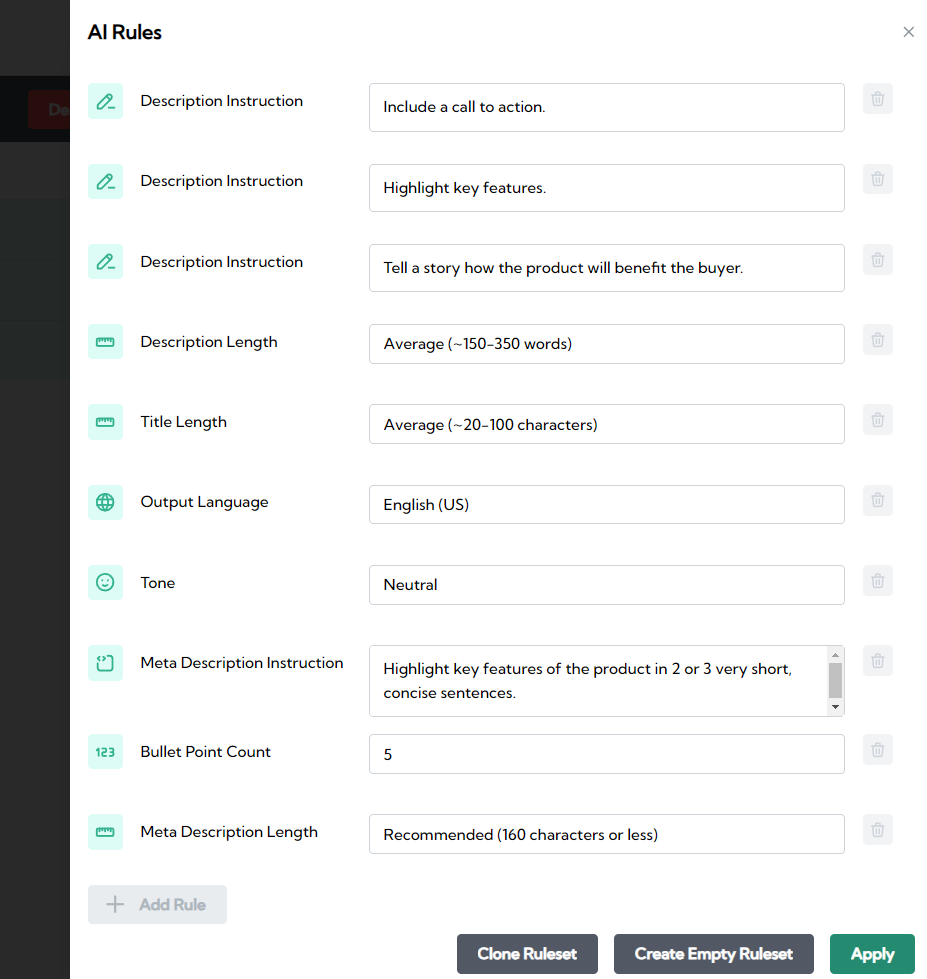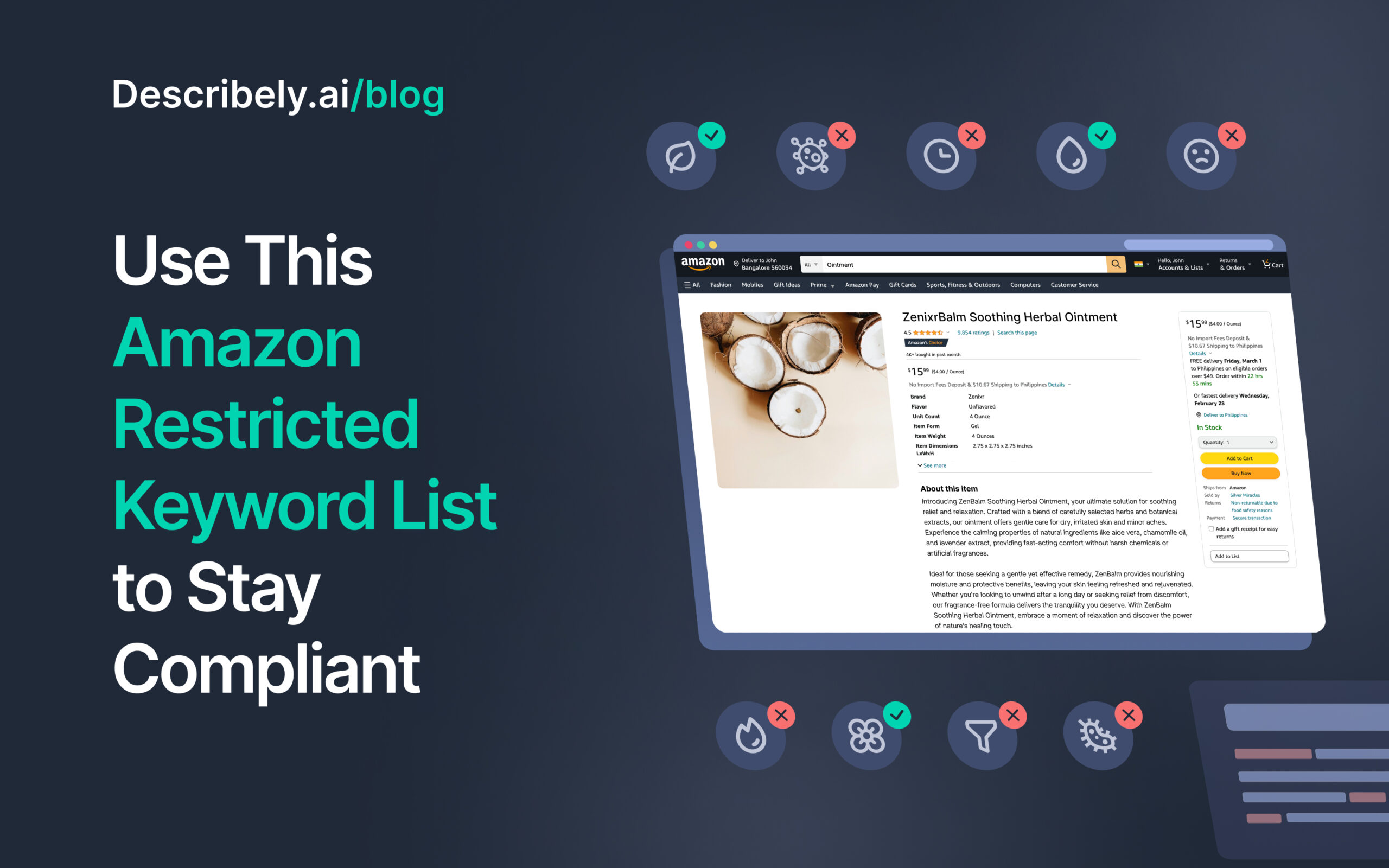
The eCommerce content team’s guide to product data cleansing & enrichment
Wondering why product descriptions are so vitally important for every eCommerce business? Consider the following facts:
- 70% of all customers start their shopping journey by doing online research.
- 20% of unsuccessful purchases are due to a lack of product information.
- 30% of company data becomes outdated each year, which can again become an issue since customers start their shopping journey online by researching the product.
Safe to say: An eCommerce transaction starts and ends with excellent product data. Exemplary, accurate product descriptions boost product visibility, increase conversion rates, ensure customer trust, and set the stage for customer satisfaction. Sounds like a great reason to perform regular audits and make sure your eCommerce product data is always cleaned, refined, and enriched, right?
If you agree (and we’re sure you do) then it’s time to fine tune your eCommerce product data cleansing techniques—and Describely is here to help you out: Sign up for free here!
What is the difference between eCommerce product data cleansing and data enrichment?
Just to ensure we’re all on the same page, here’s our explanation on the difference between data cleansing and data enrichment:
Product data cleansing
Data cleansing essentially means getting rid of all errors or inconsistencies in your product or customer data. For example, if you have duplicate entries, un-updated product listings, or missing information, data cleansing ensures your product is up-to-date.
Product data enrichment
In the same vein, if you want to update your product listings but don’t know what key information to add, you can rely on product data enrichment to find new info that you can enrich your product listings with.
Great news: you can both enrich data and cleanse data in Describely!
Why does it matter? The importance of eCommerce data cleansing and enrichment
Here’s the thing: Incomplete or incorrect product information can lead to increased operational costs and resource requirements for eCommerce businesses.
Put yourself into the customer’s shoes: Imagine you want to shop for some home furniture, so you go onto the second or the third site that the search engine shows you.
You click on a wardrobe you’re interested in buying, but there’s no information about the product material, warranty, or size dimensions. You also don’t know if they offer shipping services, what the customer reviews look like, or who the manufacturer is.
However, they do include a bunch of jargon about product manufacturing, a lot of superlative words and non-descriptive adjectives, and unrelated product history.
Do you:
- Buy the product?
- Not buy the product?
If your answer is B, there’s the proof: you don’t need just any product information to sell your products; you need the right product information to help your potential buyers make informed decisions.
So, even though data cleansing and data enriching may feel like unwarranted tasks (especially if you see decent eCommerce sales), the ROI they bring in is well worth it because having accurate and helpful product entries creates better customer experiences.
The benefits of product data cleansing and enrichment
Once you begin investing in product data cleansing services and enriching your product data, you might also be empowered to:
- Mitigate unsuccessful purchases. Incomplete purchases that were previously stopped due to missing pricing, warranty, or specifications, can now be completed with product data on hand, turning potential customers to happy customers.
- Improve internal and external communication. With consistent data across the board, it becomes easier for customer-facing teams to interact with customers (e.g., optimized marketing strategies and more accurate and helpful sales scripts for your sales team, respectively).
- Increase product visibility and conversions. Once you clean the clutter in your product descriptions and add useful keywords, your products not only become more findable by the search engines (thus increasing organic traffic), but you, too, can easily look them up with the help of keywords, tags, or product attributes.
- Grow sales and conversions. Due to improved online shopping experiences and customers having critical product information on hand, they’ll be able to move on to the next steps in their buying journey and make a purchase.
- Create better compliance regulations. Once you have a standardized process and eliminate all errors, duplicate listings, and outdated information from your customer and product database, you can begin keeping accurate records and meet channel requirements for Amazon, Google Shopping, eBay, and more.
- Increase trust and customer loyalty. Better product data also translates to increased company trust and longer-lasting goodwill. I.e., your customers don’t feel duped when they buy products from you.
Not to mention, better product descriptions will also result in happier customers.
Overview of the current state of product data quality in eCommerce
We previously discussed that 20% of all unsuccessful purchases are due to unhelpful product descriptions, and 30% of all company data becomes outdated after a year — however, these are not the only studies that show just how bad the current state of product data in eCommerce is.
In fact, other studies too, such this one by Salsify, that reports 31% of customers list incomplete product information as the biggest reason why they haven’t made a purchase.

In fact, in recent years, customers have become more and more upset with underwhelming product descriptions, and have been taking onto social media to voice their frustrations about inaccurate or incomplete product descriptions.



Techniques for eCommerce data cleansing and enrichment
Now that we’ve gone over the what and the whys, let’s get to the meatier bits and learn about some techniques we can implement for data cleansing and enriching.
1. Enrich products with missing attributes
If your products are not easily findable on the internet, if your supplier has provided you with sparse product information, or if you don’t know which keywords to integrate your product descriptions with, there’s only one solution: Enrich the product with missing attributes.
But how do you undertake this task?
If you use a solution like Describely, you’ll be able to enrich the products in your catalog by providing the tool with your product title, SKU, or keyword. Additionally, it’s also recommended to provide a link to the supplier’s website so it can pull product details from there as well as the web.
Just for reference, here’s what enriched data looks like on our platform:

You can also go one step further and ask Describely to create product descriptions based on this enriched data, and it’ll include all the details in the “enriched content” section.
The alternative to an AI tool like Describely is to hire a agency that provides product data cleansing services and data enrichment services, or to do it yourself; however, the former will cost you anywhere between $35-$75/hour, and the latter will result in $15/hourly spending, even if you pay yourself a minimum wage.
Instead, our recommendation would be to try the 7-day free trial of Describely and then opt for its paid plan (beginning at only $9/month)!
2. Remove duplicated content
Another way to ensure your product data is up to your standards is to remove any type of duplicated content, such as duplicated SKUs, images, or even so much as entire product descriptions.
We say this because duplicated content could tank SERP rankings and overall product visibility because search engines want to prioritize unique content. You might also run into the risk of splitting page authority and link equity, as well as impacting user experience (it’s always confusing to find two pages with the same information).
One way to get around this is to audit your site or content management systems (CMS) to ensure there’s no duplicated content, either in part or in full.
Experts suggest comparing product attributes, long-tail keywords, titles, and SKUs to ensure there’s no repetition in content.
Side Note: It’s possible to rank for the same keywords multiple times on a search engine, but your content formats most likely would need to be different (e.g., video vs. blog) or they’d need to fulfill different search intents (i.e., although keywords can be the same, the content has to be unique).
3. Monitor inaccurate product information
As we mentioned, regular content audits will help you monitor inaccurate product information. You can also create a feedback loop system with your most loyal customers wherein they share what missing product attributes they’d like to see or inaccurate details they’d like changed.
Alternatively, you can also monitor product reviews and find the overarching patterns amongst customer reviews, and keep an eye out for the features customers have called out for inaccurate information (e.g., your sizing dimensions could be wrong).
You can also create a data assurance team (or hire an agency for eCommerce product data cleansing services) that reviews product descriptions before they’re published. This team can also regularly monitor data sources as well as customer reviews on product descriptions.
4. Maintain data standardization
Data standardization translates to having brand rules when writing eCommerce product data — that’s to say, these brand rules will keep formatting, structure, language, tone, accuracy, and everything else in mind before creating or editing product descriptions for your brand.
This will help both, search engines and customers, navigate your site better.
You can easily hire writers and editors to undertake this task for you, or you can implement the use of Describely’s AI Rules (this feature considers your unique brand guidelines before creating and editing product descriptions) and Content Audit (which reviews your content for claims, spelling and grammar, brand guideline compliance, and more).

How can Describely help you with data enrichment
Describely, as a tool, is designed for eCommerce businesses —- we can not only help you develop product descriptions from scratch, but also help you enrich these descriptions whilst keeping your preferred brand rules in mind.
In addition, our AI can even:
- Account for restricted keywords (you can provide your own keywords or use the pre-builtAmazon restricted keyword list)
- Develop SEO content (i.e., meta titles and descriptions) and add in SEO-friendly keywords (you can provide your own keywords, or our tool can do the researching bit for you) with our SEO Tools
- Connect with your eCommerce platforms, such as Shopify (so it becomes easier to source and update content directly instead of copy-pasting)
- Manage all your product catalogs from a centralized location
If these features sound like they’re designed to help your eCommerce store, here’s where you can get started.
Want to see Describely’s eCommerce product data cleansing and enrichment capabilities in action?
Watch this video to see how Describely can help your team fill content gaps and produce incredible, on-brand product descriptions at scale!



